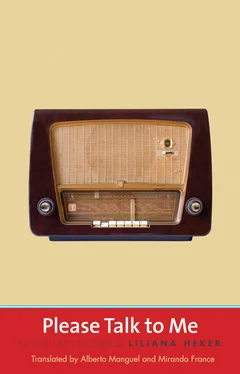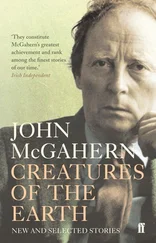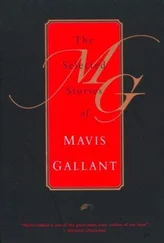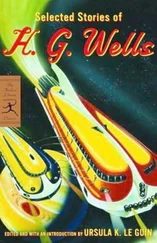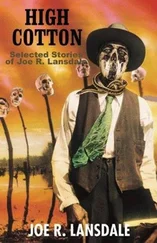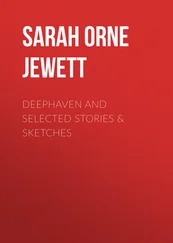‘Night will become day’ (the woman lighting the cigarette).
‘Better than day’ (the man with the pillow on the floor) ‘as if the moon, with all its reflected light, were barely a hundred metres from the Earth. Low down, in a corner, one sees the black night sky, but all the rest is Moon. Can you imagine? Solid Moon.’ There was a silence, as if we were all trying to imagine a sky of solid Moon.
‘And how long will it stay like that?’ (the man with his eyes glued on the woman who came alone).
‘The comet is constantly moving. It will move on and the strip of darkness will become wider and wider until there’s only a thin thread, a thin thread of light on the horizon that will then disappear and it will be night again.’ I felt a sort of sadness; I had only just realised that this thing which had once seemed out of my reach — like the boiling oil thrown by the women of Buenos Aires on the invading English troops in the mid-eighteenth century, or the Firpo-Dempsey match — was not only about to take place; it would also come to an end.
‘But how fast will it disappear?’ No one knew.
The woman with her back against one of the men’s knees hit herself on the forehead: ‘Now that I think about it, no,’ she said, ‘it can’t be the width. The comet will take up seventy percent of the length. Don’t you see? The tail. It’s the tail that will take up seventy percent. Like a rainbow going from here to there’ (she drew a vast segment of a circle with her extended arm) ‘but ending before it reaches the horizon.’ She thought for a moment. ‘At a distance of thirty percent,’ she added, with a touch of scientific rigor.
That wasn’t bad, though I still preferred the vast Moon unfolded a hundred metres from Earth. And at what speed would that great arch of light cross the sky? That question — and many others — remained unanswered.
But we didn’t feel uneasy. Uneasy we had felt at the beginning of the week, when the papers announced that the comet was already over the world. We had always imagined that we’d rush out into the street to greet its arrival. ‘Here it comes, here comes the comet!’ But none of that happened. We looked up into the sky and saw nothing.
There were those with telescopes, of course. Those with telescopes made calculations and drew up schedules and strategic points. It seems that the brother-in-law of the woman caressing one of the men’s ears, after consulting several manuals, had found the very best optical conditions: on the balcony of one of his cousins at 3:25 Wednesday morning with a telescope aimed at 40 degrees off the constellation of Centaurus.
‘But your brother-in-law, did he actually see it?’ we asked at the same time, as both the man and I played with the cat.
‘He says he thinks he saw it,’ was the cautious answer.
We had heard of some people who had travelled to Chascomus or to a place somewhere between San Miguel del Monte and Las Flores, or of others who had hurried to Tandil, to a small hill close to the Moving Rock. But as we had not had the chance to talk to any of them, we didn’t know whether these peregrinations had been fruitful. Through adverts in the newspapers we knew that several kinds of charters had been organised, from a jet flight to San Martin de los Andes that included champagne dinner, diplomatic suite, sauna and full American breakfast, to bus tours to several suburban areas, a few with traditional barbecue and guitar music under the comet’s light. We didn’t know what the results had been. But three very precise lines in a Thursday paper made us dismiss all those telescopes and nocturnal ramblings. And that’s how it had to be. Because what we had always dreamt of, what we truly wished for, was simply to look up and see it. And that, the three lines in the paper said, would become possible on Friday night once it was completely dark; then the comet would come closer to Earth than ever before. Then, and only then, might it be seen as those men in boaters and those women in hats had seen it, as the grandfather on his three-legged stool and the bewitched family in my reader had seen it. Right here, by the river, on the Costanera Sur. And, in honour of that unique moment for which we had longed since our days of reading adventure stories and which, with luck, would repeat itself for our children’s grandchildren, this Friday night, all the lights of the Costanera would be switched off.
That was the reason that waiting in this house in San Telmo, among lamps and stools, was something of a vigil. Every so often someone would go out onto the balcony to see whether it was already dark.
‘No use going earlier’ (the woman drinking white wine). ‘We wouldn’t see anything in the light.’
And the man on the balcony: ‘No, it’s not because of the light, it’s because it won’t come over the horizon until it’s dark. That’s what the paper says.’
But at what time exactly? We didn’t know that either. Darkness isn’t something that falls over the world for an instant. True. But there comes a moment when, suddenly looking out at the street, one can say, ‘It’s night already.’ This was said by the man eating peanuts, and we all went out onto the balcony to check.
On the way to the Costanera we said very little. We were crossing Azopardo when the man nearest to the sidewalk asked, ‘You think it’s appeared already?’
And the woman next to the wall said, ‘Better if it has. Then when we get there we’ll see it suddenly, over the river.’
‘The river?’
I don’t know who said that. It didn’t matter much. I realised that I too, since I’d read the announcement in the paper, had imagined it like that: with its tail of powdered stars extending down into the river. But there’s no real river in Buenos Aires any longer.
‘Grass and mosquitoes, that’s all there is on the Costanera Sur,’ said the man on my right.
‘Still the place has kept its own magic’ (the woman behind). ‘It’s as if it has preserved a memory of the river.’ I recalled the majestic ghost of the Municipal Balneario Beach, the square celebrating the triumphant arrival of the Solitary Seaman, Luis Viale, and his stone lifebelt about to dive (into a muddy lot where there are now only screeching magpies) to save the victims of the shipwrecked Vapor de la Carrera . I recalled the drawbridge, the same bridge I’d crossed in the No. 14 streetcar when my mother took me to the Balneario, so familiar that I could tell the width of the beach by the height of the water hitting the stone wall. I loved that bridge, the breathless wait on the days when it opened leisurely to allow a cargo ship to pass, the suspense as it closed again, since the slightest mistake in the position of the tracks (I suspected) would provoke a terrible derailment. And the joy when the streetcar emerged unscathed and the river lay waiting for me. The river was like life: the comet was something else. The comet was like one of those moments of ecstasy that can be found only in books. Distractedly, I knew that it would return one day, but I didn’t expect it to. Because in the days when happiness consisted in playing in the mud of the Balneario, any comet or paradise glimpsed beyond my twentieth year didn’t merit being dreamt about.
‘And here I am walking across that bridge,’ I said to myself, ‘not so different from the person who once crossed it in a streetcar so as not to love it still, nor so decrepit as not to be on the verge of shouting with joy, as I march in procession to meet the comet with this bunch of lunatics.’
It took me a while to realise that the word ‘procession’ had occurred to me because of the mass of people who, on foot or in cars or trucks or even in a tractor, were gathering together in greater and greater numbers as we approached the Costanera.
Читать дальше
